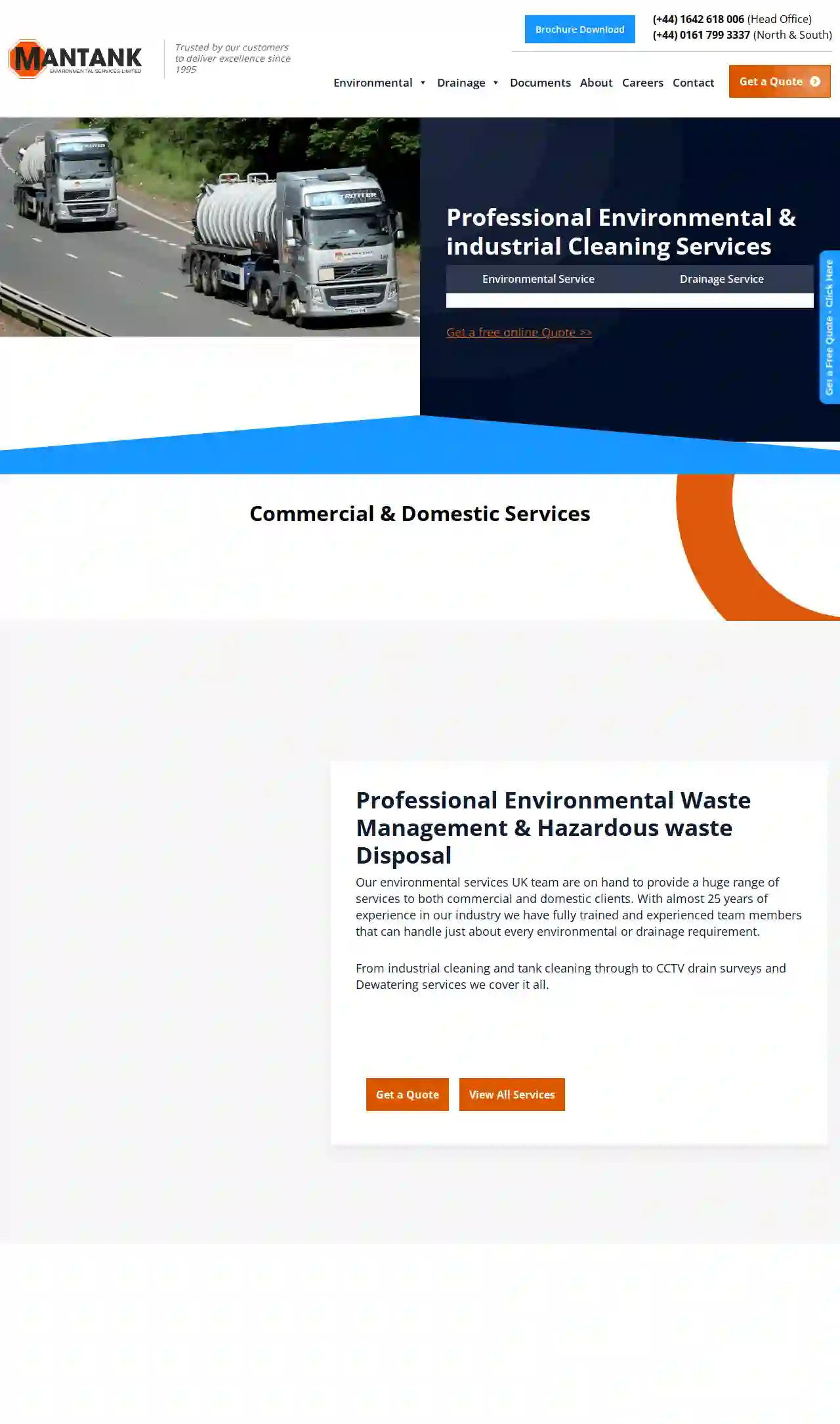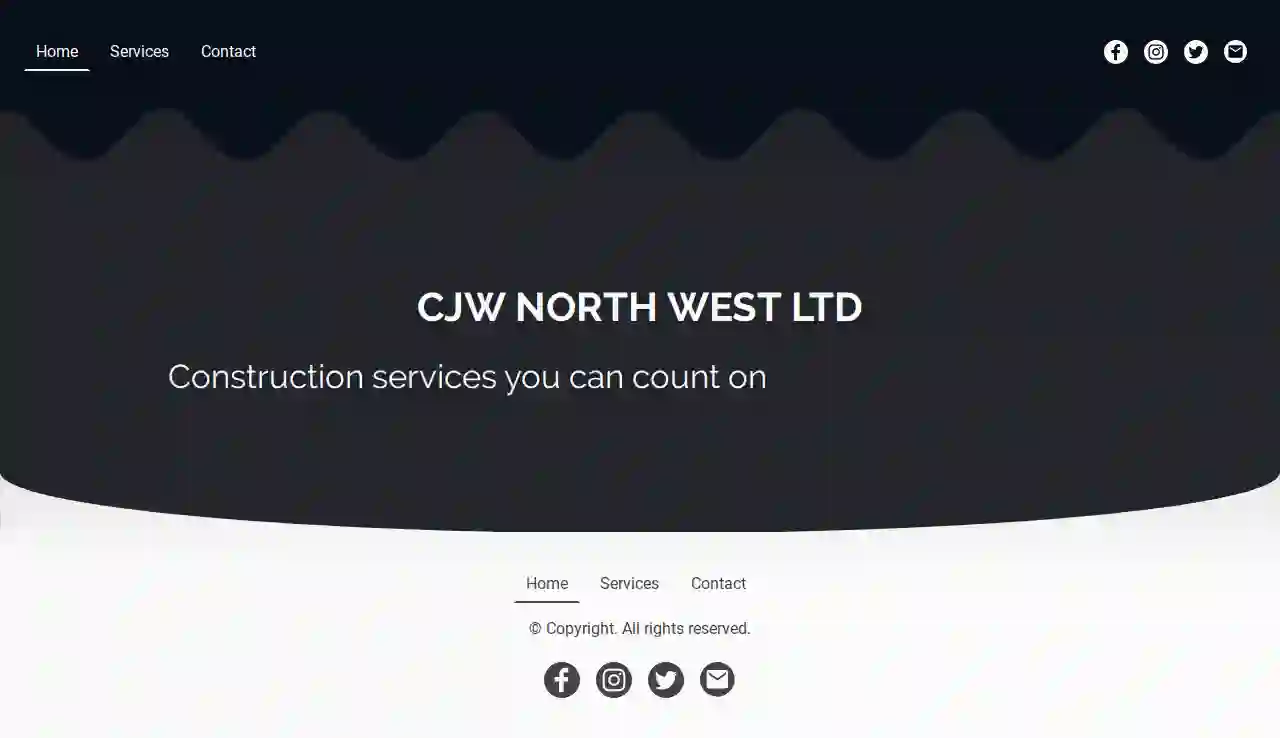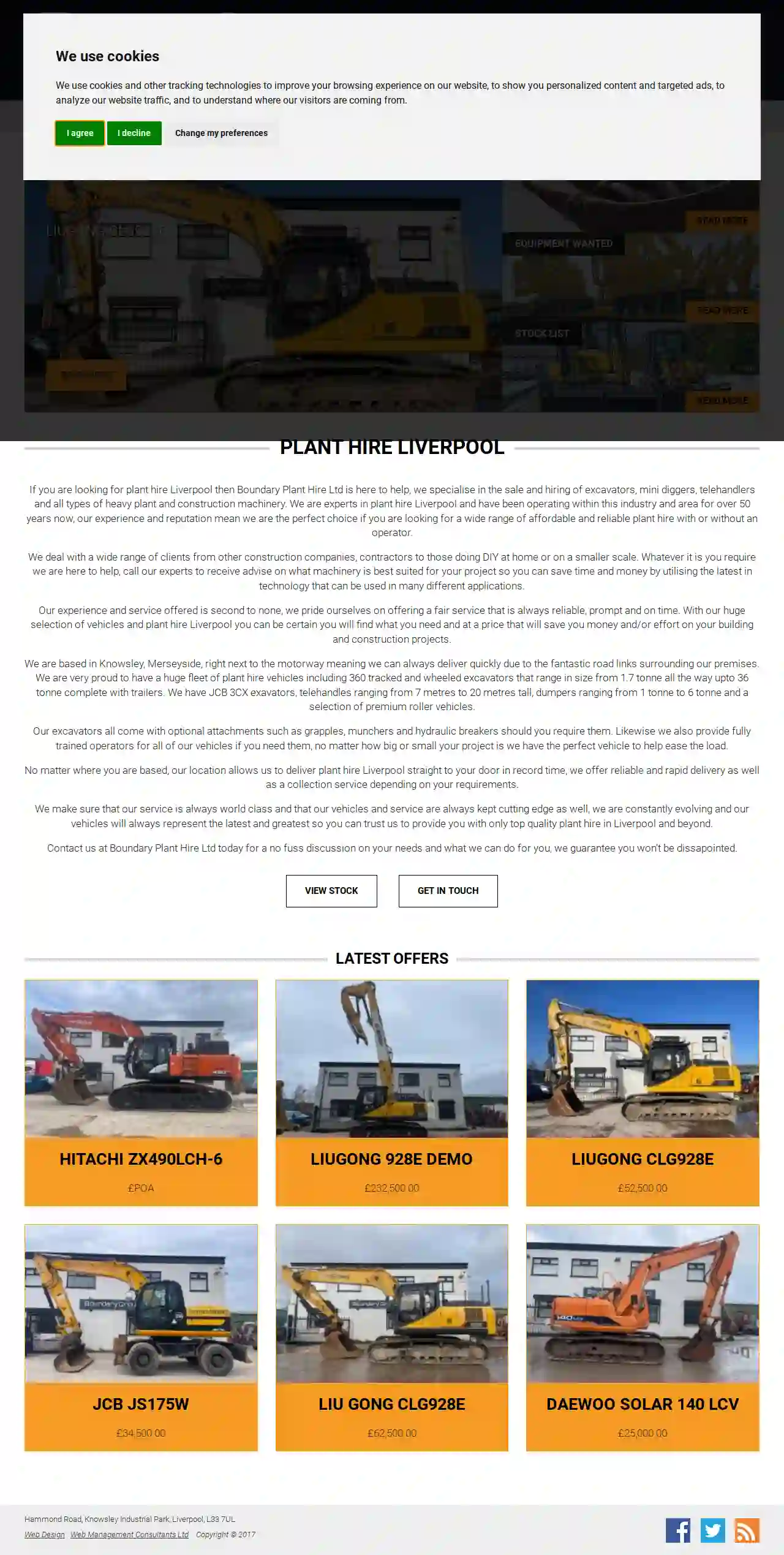Excavation Contractors New Brighton
Find the best Land Excavation in New Brighton
Get multiple Excavating Contractor quotes for your project today! Compare profiles, reviews, accreditations, portfolio, etc... and choose the best offer.

Mantank Environmental Services Limited
4.52 reviewsHill House Farm, Redmarshall Road, Redmarshall, Stockton on Tees, Stockton-on-Tees, TS21 1EW, GBTrusted by our customers to deliver excellence since 1995 Mantank Environmental Services Ltd is a leading provider of environmental and drainage services across the UK. We have a proven track record of delivering high-quality, cost-effective solutions to a wide range of clients, from small businesses to large corporations. Our team of experienced professionals is committed to providing our clients with the best possible service, and we are always striving to improve our processes and technologies to ensure that we are meeting the ever-changing needs of our industry. Our Services We offer a wide range of environmental and drainage services, including: Tank Cleaning Industrial Cleaning Sewage Tank Cleaning Tank Decommissioning Chemical Waste Disposal Environmental Services UK Water Tank Cleaning Dewatering Services Waste Management Company Water Jetting Vessel Cleaning Industrial Vacuum Sludge and Silt Removal Industrial Tank Cleaning SuDS Pond Maintenance CCTV Drain Survey Drain Camera Drain Clearance Drain Inspection Drain Repair Drainage Services Our Commitment to Quality We are committed to providing our clients with the highest quality services. We are fully accredited and insured, and we are always striving to improve our processes and technologies to ensure that we are meeting the ever-changing needs of our industry. Our Team Our team of experienced professionals is committed to providing our clients with the best possible service. We are always happy to answer any questions you may have, and we are always striving to improve our processes and technologies to ensure that we are meeting the ever-changing needs of our industry.
- Services
- Why Us?
- Gallery
Get Quote
cjw north west ltd
51 reviewsChester, GBCJW NORTH WEST LTD Construction services you can count on. We are a leading provider in the construction industry, offering a wide range of services for both domestic and commercial clients. No job is too big or too small. If you can't find exactly what you're looking for, please drop us a message and we will get right back to you.
- Services
- Why Us?
- Gallery
Get Quote
Wirral Trade Centre
4.9144 reviews25b Greenfield Way, Cherry Tree Shopping Centre, Wallasey, CH44 5XX, GBWelcome To Wirral TradeCentre Based At Our Office In The Cherry Tree Shopping Centre Wallasey Wirral Trade Centre is a complete property development and home renovation service provider. Specialising in gas, plumbing and heating, plastering, carpentry, drainage, rainwater management, electrical services and much more. All Of Your Home Renovation Services Under One Roof When you’re looking for high-quality property services, Wirral Trade Centre is here to help. Our professionals are qualified and have over a decade's worth of experience in their specialist field. No matter what tradesperson you need, we can help. If we don't have an in-house specialist to help you, we will find someone who can complete the job for you and also offer a 12-month guarantee on all work completed by any tradesperson that we organise for you! Contact our store today to learn more about how we can help you turn your dream house into a reality. Friendly Face To Face Consultation As we have a high street shop, you can pop in and discuss your needs with us, face to face. Ask us about anything, from full property renovations to installations and repairs, we are your one-stop-shop for any domestic property services. If you can't find time to pop in and see us, feel free to contact us via phone or email. Why Choose Us? Over 12 months guarantee on all work Great quality work at a fair price Qualified and time served Ex British Soldiers First aid trained and Gas Safe registered Get A Tradesperson Today Drop into our store for a free quote on any home renovation or property services.
- Services
- Why Us?
- Testimonials
- Gallery
Get Quote
Boundary Plant Hire Ltd
Hammond Road, Knowsley Industrial Park, Liverpool, L33 7UL, GBPlant Hire Liverpool If you're looking for plant hire in Liverpool, Boundary Plant Hire Ltd is here to help. We specialize in the sale and hiring of excavators, mini diggers, telehandlers, and all types of heavy plant and construction machinery. We're experts in plant hire in Liverpool and have been operating in this industry and area for over 50 years. Our experience and reputation make us the perfect choice if you're looking for a wide range of affordable and reliable plant hire, with or without an operator. We work with a wide range of clients, from other construction companies and contractors to those doing DIY at home or on a smaller scale. Whatever you need, we're here to help. Call our experts to get advice on what machinery is best suited for your project so you can save time and money by utilizing the latest technology that can be used in many different applications. Our experience and service are second to none. We pride ourselves on offering a fair service that is always reliable, prompt, and on time. With our huge selection of vehicles and plant hire in Liverpool, you can be certain you'll find what you need at a price that will save you money and/or effort on your building and construction projects. We're based in Knowsley, Merseyside, right next to the motorway, meaning we can always deliver quickly due to the fantastic road links surrounding our premises. We're very proud to have a huge fleet of plant hire vehicles, including 360 tracked and wheeled excavators that range in size from 1.7 tonnes all the way up to 36 tonnes, complete with trailers. We have JCB 3CX excavators, telehandlers ranging from 7 meters to 20 meters tall, dumpers ranging from 1 tonne to 6 tonnes, and a selection of premium roller vehicles. Our excavators all come with optional attachments such as grapples, munchers, and hydraulic breakers should you require them. Likewise, we also provide fully trained operators for all of our vehicles if you need them. No matter how big or small your project is, we have the perfect vehicle to help ease the load. No matter where you're based, our location allows us to deliver plant hire in Liverpool straight to your door in record time. We offer reliable and rapid delivery as well as a collection service depending on your requirements. We make sure that our service is always world-class and that our vehicles and service are always kept cutting edge. We're constantly evolving, and our vehicles will always represent the latest and greatest, so you can trust us to provide you with only top-quality plant hire in Liverpool and beyond. Contact us at Boundary Plant Hire Ltd today for a no-fuss discussion on your needs and what we can do for you. We guarantee you won't be disappointed.
- Services
- Why Us?
- Gallery
Get Quote
Town & Country Constuction & Groundworks
51 reviewsFour Oakes, Eaves Lane, Cheadle, ST10 1TL, GBTown and Country Groundworks: Your Trusted Partner for Groundwork and Civil Engineering Projects Based in Cheadle, Staffordshire, Town and Country Groundworks is a leading provider of comprehensive groundwork and civil engineering services, operating nationwide. We are committed to delivering proactive, intelligent solutions that meet the unique needs of each project, ensuring timely and budget-conscious completion. Our team of experienced and time-served operatives is dedicated to providing a high level of service, characterized by our flexible, forward-thinking approach, open communication, and close client collaboration. We believe in building strong relationships with our clients, ensuring their complete satisfaction throughout the project lifecycle. With over 20 years of experience, we have a proven track record of success in a wide range of projects, including new builds, extensions, roadway and car park construction, and luxury builds. We have worked with prestigious clients such as Premier Inn, Whitbread, JD Wetherspoon, Mitchell and Buttler, Toby Carvery, Harvester, Miller and Carter, Tesco, and Wildes Group. Our commitment to quality, efficiency, and client satisfaction has earned us a reputation as a reliable and trusted partner in the industry. We are dedicated to exceeding expectations and delivering exceptional results on every project.
- Services
- Why Us?
- Gallery
Get Quote
S.T. Demolition
Birkenhead, CH41 1HE, GBAbout S.T. Demolition & Groundwork Specialist Technical Demolition and Groundworks Ltd started as two families joined forces combining decades of experience gained through working separately within the construction, demolition, and recycling sectors. As a family-run business, we have strong moral values and have structured our day-to-day operations to reflect these, we always quote our prices fairly and accurately aiming to complete work safely and in the most efficient way. With demolition being one of the most dangerous industries to work within, our health and safety obligations are our priority. Health and Safety planning starts weeks before any work begins, as we form Risk Assessment Method Statements (RAMS), Methodology Sequences Plans, Environmental & Ecology, and Condition Reports. We are proud to be part of any form of conservation or heritage work allowing buildings from the past to be part of our future. On behalf of one of our clients, we took a leading role in the sympathetic soft stripping inside Martins Bank, Liverpool. Soft stripping the inside of this iconic building we removed doors, door frames, fixtures and fittings, all of which were photographed, itemised and catalogued on behalf of the heritage alliance, also, leaving many of the period features in perfect situ. We Support The Charity No Body Left Behind And believe in giving people a second chance in not letting their past define their future which has proven to be successful. Our company values are to respect each other and work as a team. We Are PRO Green! As a company our aim is to recycle up to 96% of waste material. This is achieved by operatives being fully trained in material segregation on site prior to being sent to the designated recycling container. i.e., wood, metal, hardcore, plasterboard, glass and crushed concrete. To help keep environmental impact as low as possible, bricks are palleted ready for reuse and we also offer to crush damaged brick and concrete on site ready for reuse as backfill and crush material on the original site. This helps with our recycling initiative & commitment, saving the client the running costs and emissions in transporting wagons to and from site and the need to purchase crush material. Fully Trained Operatives ST Demolition prides itself in training all our staff in safe standards to work in asbestos awareness training, SSSTS, first aid, working at heights, confined spaces, and many more.
- Services
- Why Us?
- Gallery
Get Quote
Sandyfields Ltd
54 reviewsLower Aston Farm, Wolverhampton, WV5 7DZ, GBWelcome to Sandyfields. Established in 1985, we have more than 30 years’ experience in providing a wide range of specialist tree surgeon, landscaping and groundwork services for domestic and commercial customers. Our Expertise Sandyfields work extensively with some of the West Midlands’ leading businesses and organisations, including Birmingham Wildlife Trust, Jaguar Land Rover and Hovi Developments. We support commercial customers including local authorities, housing developers, farmers, estate managers, fisheries and nature reserves, as well as domestic customers across Wolverhampton, Dudley, Stourbridge, Kingswinford, Wombourne, Albrighton, Bridgnorth and beyond.
- Services
- Why Us?
- Testimonials
- Gallery
Get Quote
Drainage Care
53 reviewsChester, GB24/7 Emergency Drainage Repair At Drainage Care UK, we're dedicated to providing experienced, reliable, and courteous drainage services for all our customers. We understand that dealing with an emergency drainage problem at any time can be stressful, which is why we offer a fast and efficient drain unblocking service. Our team is equipped to handle a wide range of drainage and plumbing issues, including blocked drains, sink repairs, and CCTV drain surveys for both residential and commercial properties. We're committed to leaving no stone unturned in resolving your drainage problems. We're always ready to help, with a team of friendly staff available 24/7.
- Services
- Why Us?
- Testimonials
- Gallery
Get Quote
Contrak Construction
53 reviewsContrak Ltd, Newcastle under Lyme, Loomer Road, Newcastle-under-Lyme, ST5 7LB, GBCOMPLETE CONSTRUCTION CONTRACTING SERVICES With an emphasis on quality, we are committed to providing construction services that are professional and client-focused. OUR WORK Contrak Limited is an established construction company based in Newcastle-under Lyme with an operational base encompassing Staffordshire, Cheshire and bordering counties. The areas of expertise include building, commercial and agricultural construction, groundwork and civil engineering. WHAT WE DO Follow us on on social media to stay up-to-date with our latest projects, as we work on them.
- Services
- Why Us?
- Gallery
Get Quote
Concourse Shopping Centre
3.2Concourse Centre, Southway, Skelmersdale, WN8 6LN, GBThe Concourse Shopping Centre: Your One-Stop Shop in Skelmersdale Nestled in the heart of Skelmersdale, West Lancashire, The Concourse Shopping Centre is a vibrant hub for shoppers seeking a diverse range of retail experiences. With nearly 100 retailers under one roof, you'll find everything you need and more. From national brands like Aldi, Home Bargains, Argos, and Boots to independent retailers and food outlets, The Concourse offers a mix of options to suit every taste and budget. Explore the centre's ground and first floors, discover your favourite stores, and enjoy a convenient shopping experience. The Concourse is managed by London & Cambridge Properties Ltd. For more information about LCP, visit their website at www.lcpproperties.co.uk .
- Services
- Why Us?
- Our Team
- Gallery
Get Quote
Over 13,059+ Excavation Businesses on our directory
Our excavation contractors operate in New Brighton & beyond!
ExcavationHQ has curated and vetted the Best Excavation Companies arround New Brighton. Find a reliable business today.
Frequently Asked Questions About Excavation Contractors
- Utility Locates: Contact your utility companies to mark the locations of underground lines before excavation begins. This is usually a free service.
- Hand Digging: Excavate carefully by hand near marked utility lines to avoid damage.
- Potholing: Digging small test holes to expose and verify utility depths and locations.
- Safe Distances: Maintaining a safe distance between excavation equipment and marked utility lines.
- Vacuum Excavation: Using vacuum excavation techniques to expose utilities without digging, reducing the risk of damage.
- Sloped Property: Your property has a significant slope, making it prone to soil erosion or landslides.
- Creating Usable Space: You want to level off a sloped area to create a flat surface for patios, gardens, or other outdoor spaces.
- Preventing Damage: Erosion is threatening existing structures, driveways, or walkways.
- Landscaping Features: You're incorporating tiered gardens, raised beds, or other landscaping elements requiring soil retention.
- Soil Type and Stability: Stable, cohesive soils allow for deeper excavations than loose or unstable soils.
- Groundwater Level: Excavations below the water table require dewatering techniques to manage water intrusion.
- Equipment and Resources: The size and capabilities of excavation equipment influence the achievable depth.
- Safety Regulations: OSHA and other safety regulations impose limitations on trench depths without proper shoring or sloping.
- Project Requirements: The purpose of the excavation (basement, pool, foundation) determines the necessary depth.
- Spring and Fall: Often considered favorable due to moderate temperatures and drier soil conditions.
- Summer: Can be suitable, but hot weather can make working conditions challenging and might require additional measures (shade, hydration) for workers.
- Winter: Excavation in winter can be more difficult due to frozen ground, snow, and potential delays caused by inclement weather. It might also require specialized equipment or techniques.
How do you protect utilities during excavation?
How do I know if I need a retaining wall?
How deep can you excavate?
What is the best time of year for excavation?
How do you protect utilities during excavation?
- Utility Locates: Contact your utility companies to mark the locations of underground lines before excavation begins. This is usually a free service.
- Hand Digging: Excavate carefully by hand near marked utility lines to avoid damage.
- Potholing: Digging small test holes to expose and verify utility depths and locations.
- Safe Distances: Maintaining a safe distance between excavation equipment and marked utility lines.
- Vacuum Excavation: Using vacuum excavation techniques to expose utilities without digging, reducing the risk of damage.
How do I know if I need a retaining wall?
- Sloped Property: Your property has a significant slope, making it prone to soil erosion or landslides.
- Creating Usable Space: You want to level off a sloped area to create a flat surface for patios, gardens, or other outdoor spaces.
- Preventing Damage: Erosion is threatening existing structures, driveways, or walkways.
- Landscaping Features: You're incorporating tiered gardens, raised beds, or other landscaping elements requiring soil retention.
How deep can you excavate?
- Soil Type and Stability: Stable, cohesive soils allow for deeper excavations than loose or unstable soils.
- Groundwater Level: Excavations below the water table require dewatering techniques to manage water intrusion.
- Equipment and Resources: The size and capabilities of excavation equipment influence the achievable depth.
- Safety Regulations: OSHA and other safety regulations impose limitations on trench depths without proper shoring or sloping.
- Project Requirements: The purpose of the excavation (basement, pool, foundation) determines the necessary depth.
What is the best time of year for excavation?
- Spring and Fall: Often considered favorable due to moderate temperatures and drier soil conditions.
- Summer: Can be suitable, but hot weather can make working conditions challenging and might require additional measures (shade, hydration) for workers.
- Winter: Excavation in winter can be more difficult due to frozen ground, snow, and potential delays caused by inclement weather. It might also require specialized equipment or techniques.